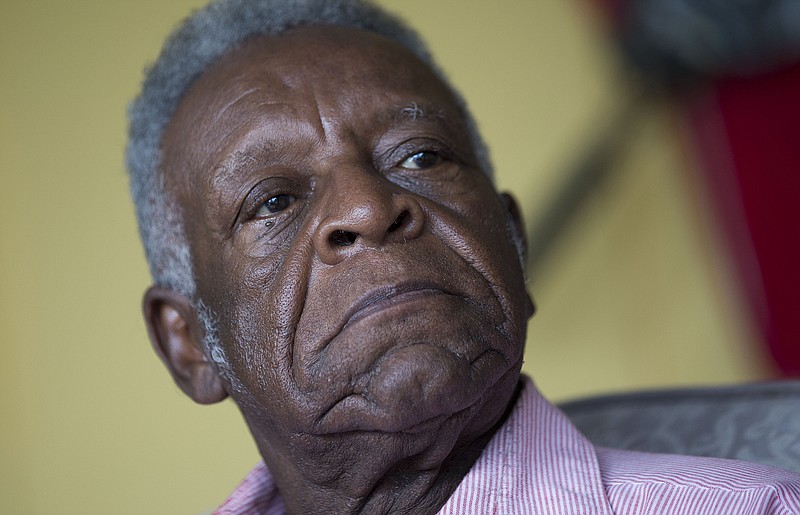The case of Timothy Tyrone Foster before the U.S. Supreme Court is an intriguing one because, if decided legally instead of politically as so many of the recent decisions in the Roberts Court have been, it could shine the light on the whole jury selection process in the country.
At issue is whether potential black jury members were improperly singled out and kept off the subsequent all-white jury in the murder trial of Foster, who is also black, in Rome, Ga., in 1987.
In most U.S. trials involving juries, attorneys for both the prosecution and defense are allowed, in a process called voir dire, to question prospective jurors about their lives, their histories, their relationships to those in court, their interests, their knowledge of the case and various other matters in an effort to secure a jury more sympathetic to their respective side.
However, in the 1986 case Batson v. Kentucky, the Supreme Court ruled that a prosecutor's use of a peremptory challenge - excluding a potential juror without stating a reason - in order to remove a minority group member cannot be based on race alone. It also encouraged trial judges to keep a careful watch over such challenges.
Foster's lawyers have said over the years that prosecutors' notes, such as a list marked "Definite No's" that included the remaining five potential black jurors, proved that prosecutors' use of peremptory challenges was, in fact, based on race.
To date, Georgia courts - all the way up to the Georgia Supreme Court - have rejected the claims of discrimination, the race-neutral reasons given by attorneys including the likes of "failure to make eye contact," being "a social worker," being "divorced" and looking "bored."
The problem is, depending on the context of the trial, each of those reasons could be an important one for excluding a specific jury member. But whether they were in Foster's case are known only to the original prosecutors.
In other words, the Supreme Court will have to decide the case, ultimately, on what the members believe was in the prosecutors' minds and on what motives they assign to the notes the prosecutors made.
Or they could take the far bigger step in removing - or somehow drastically limiting - peremptory challenges, but that's something even this often politically deciding Supreme Court is not likely to do.
Yet, part of the larger issue in this case and in courts across the country is the makeup of the jury pools.
Usually, jury pools are chosen in what is assumed to be a reasonably random method from voter registration lists or driver license/state ID renewals.
One would assume, then, that the racial makeup of jury pools would roughly mimic the demographic population of the county or region.
A jury pool for the Chattanooga Division of the United States District Court of the Eastern District of Tennessee, then, might be expected to have roughly the racial makeup of the combined counties in the division - Bledsoe, Bradley, Hamilton, Marion, McMinn, Meigs, Polk, Rhea and Sequatchie counties.
With 624,935 people in the counties that make up the Chattanooga Division, which has 12.1 percent black residents, a jury pool of 65 to 75 people - as existed in the local division of the federal court in the period from early June to early October this year - would be expected to have eight or nine black members.
If a jury panel of 20, from which to select a specific trial jury, is randomly selected from those 65-75 people, the panel is likely to have - at the most - two or three black members. If one or more of those black potential jurors is challenged and excluded for cause - that is, something in the juror's background that would prejudice them in the case - and one or more is excluded with a race-neutral peremptory challenge, it wouldn't be difficult - with absolutely no malfeasance - to have an all-white jury seated if a black defendant is on trial.
Depending on how the jury pools are selected across the country, the number of minorities in the pool may be even further reduced because a smaller percentage of blacks than whites is registered to vote and a smaller percentage of blacks than whites is licensed to drive.
And while potential jurors cannot be excluded solely on their race, they may be excluded through peremptory challenges for the likes of their faith, intelligence (or lack thereof), attitude, clothing or body language.
So the Supreme Court will have its hands full in the Foster case not only on its merits but also if it considers how jury pools are selected and how peremptory challenges can be used.
